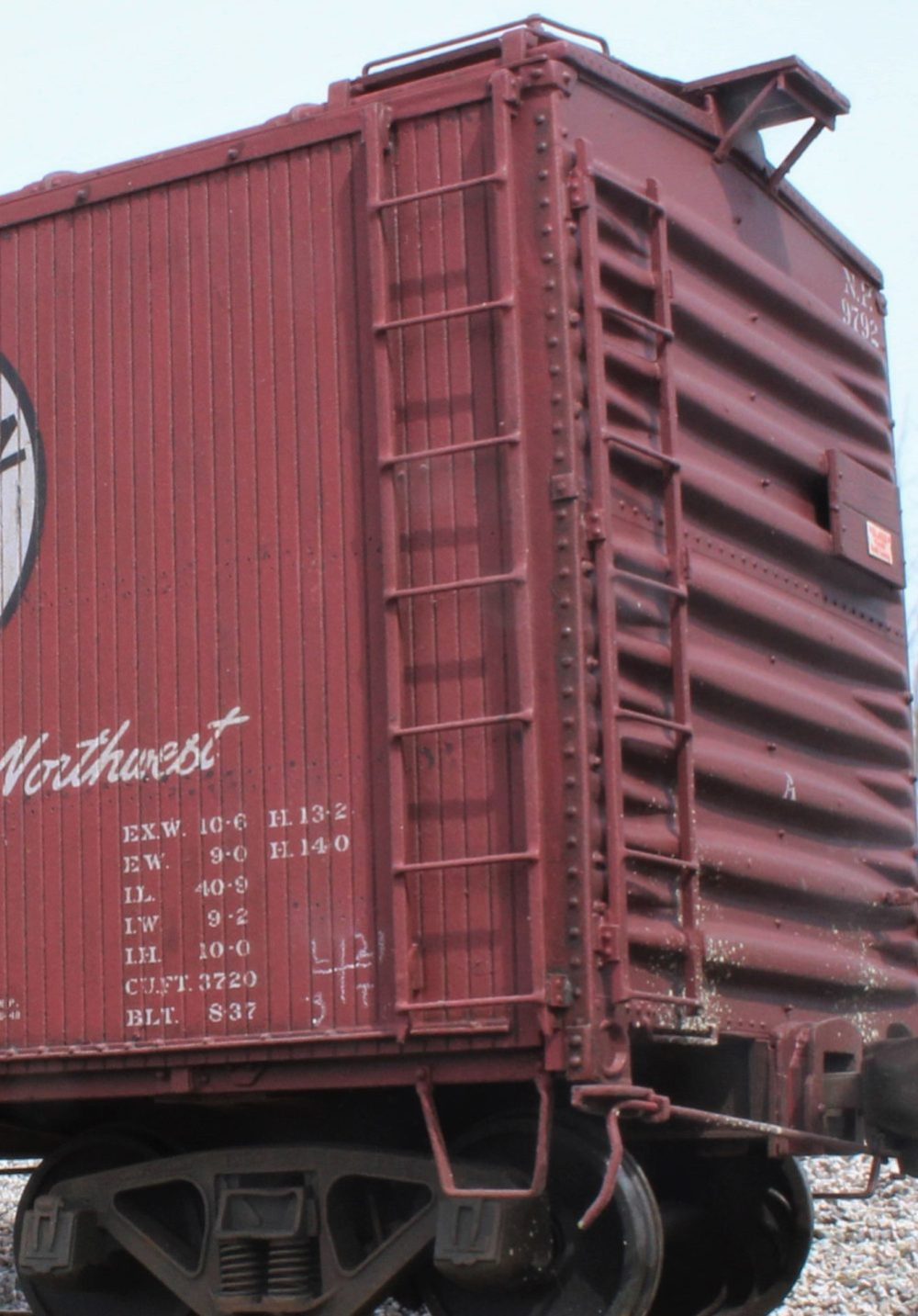Weathering has always been a mystery to me. I have tried Floquil, Poly Scale, pigments, Vallejo acrylics and now MIG Ammo oils. The last three are now my go-to approach. I have found it useful to layer effects using acrylic washes followed by washes of oil. I must credit Lee Turner for showing me the way forward with weathering. He is the master of technique with a real touch for picking out details and highlights. Thank you Lee!
The picture shown above has been weathered with the MIG Ammo oils. The oil washes are easy to control and dry slower than acrylics so corrections can be made if necessary. The car’s underframe had been weathered with Vallejo acrylics. I added a few more touches with the oils.
Here is the tank car before being attacked with Oil Brushers.
MIG Ammo has a good range of colors available but these are the one’s I have found useful. You can check out the full range here. By the way, I have been buying my Oil Brushers on Amazon. Free shipping beats the charge that most online shops charge.
From the left to right here are the basic supplies: ordorless mineral spirits, jar hold basic mineral spirits with a few drops of Japan Drier and the individual Oil Brusher tubes. I use a sheet of plastic as a pallet. I put a dab of the oil with the tube brush on the plastic.
Wet the brush with mineral spirit and touch the edge of the oil. Capillary action will draw some of the paint into the brush. Test to see how it will flow onto a surface like scrap plastic. I suggest you use small amount on the brush until you can get the feel of the medium.
Washes on a tank is best started at the top seem and draw it down to the frame. It will be two strokes since the railing gets in the way. The basic washes are dust and dark brown. The colors will flow together which helps create subtle variations. I did use a couple highlights of rust in a few area on the tank and dome.
Another application for Oil Brushers that has been effective for me. It is weathering flat car decks. I use the same pallet of colors on flat decks. I use Lee Turner’s approach of painting the boards with variations of gray and tan that are mixed from acrylic paints like Model Masters.
This is a repeat of previously published Lee Turner on wood decks.
Here is Lee’s completed Red Caboose deck. The idea is to not use lots of different colors such the it looks like stripes on a cheap suit.
Now my basic approach is the same as Lee.
I applied Oil Brushers to blend the variations in plank colors. I used the dust and dark brown to the acrylic color base.
So this completes my story on using Oil Brusher oil weathering models. How you were able to learn a few things.
Gene












Gene, Thanks! This is great information. I really like the weathered look that you have achieve with the Oil Brusher. I am off to order some right after this! Much appreciated as always Gene!
Gene, I think nature weathers a tad more evenly. Just a thought.
Great tutorial, Gene. I will accumulate the needed supplies and use them on my next weathering job.
Wonderful information, especially with the details explained, thanks!